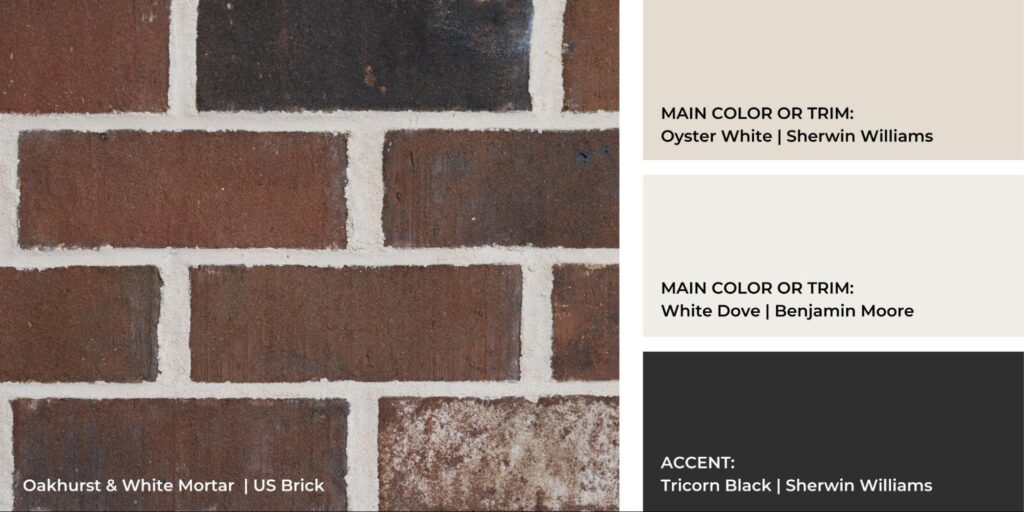So, you want a white brick house? It’s a timeless classic, and we don’t blame you. If you’re planning your new construction build, there are several things to consider when choosing the perfect white brick. The first is whether you prefer natural white brick or painted white brick. Each option has its own advantages and considerations:
- A natural white brick is composed of the same durable materials as any traditional brick. Its color is achieved through heavy sand coatings baked into the surface during the firing process. Unlike painted brick, which can chip, peel, and require repainting, natural white brick, when properly cared for (no pressure washing!), retains its pristine appearance indefinitely.
- Painter bricks, on the other hand, are an excellent choice for those looking to color-match an exact shade of white or who prefer a brick with less natural color variation. We manufacture two types: one with a textured surface and another with a smooth, standard finish. That said, it’s crucial to use a breathable masonry paint like Romabio. It’s our go-to and can be color-matched to all the popular brand names like Sherwin Williams and Benjamin Moore.
What Color Mortar Goes Best With White Brick?
For those seeking an all-white, unified brick façade, the choice of mortar color for a white brick typically boils down to either ivory or white. Naturally, white mortar might seem like the obvious choice, but that’s not always the case! More often than not, ivory mortar is used to achieve a brighter, whiter, facade.Take Avalon brick for example:

Avalon brick has a unique texture that reveals subtle color variations. The softer, warmer white appearance seen on the left image is the result of using a white mortar. In contrast, the image on the right appears brighter, and whiter due to the subtle contrast of the ivory mortar. This rule of thumb applies to most white bricks, due to the subtle contrast the ivory mortar provides, but of course there are exceptions.
For example, think about a brick like North Highland. Since this brick has minimal texture and color variation, ivory mortar won’t provide the same contrast as it would with a brick like Avalon or Magnolia. Instead, white mortar would become the choice for achieving a brighter, more cohesive look, and ivory for the a softer, subdued white. Neither option is superior; it simply depends on the look you’re aiming for!

Brick Siding Color Guides
For more detailed information on undertones, shades, and textures check out our brick color guides.

































